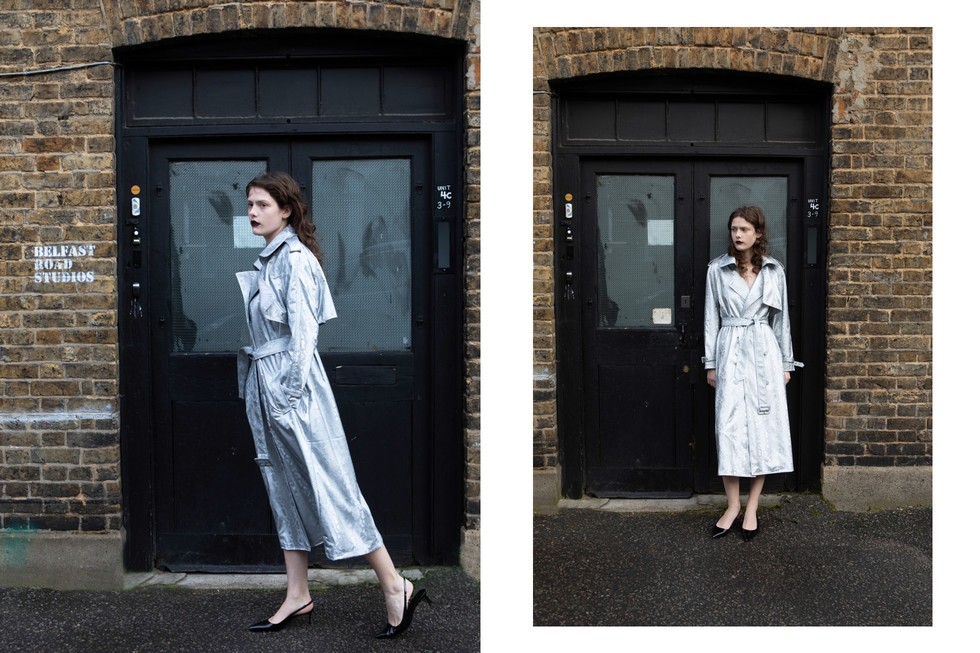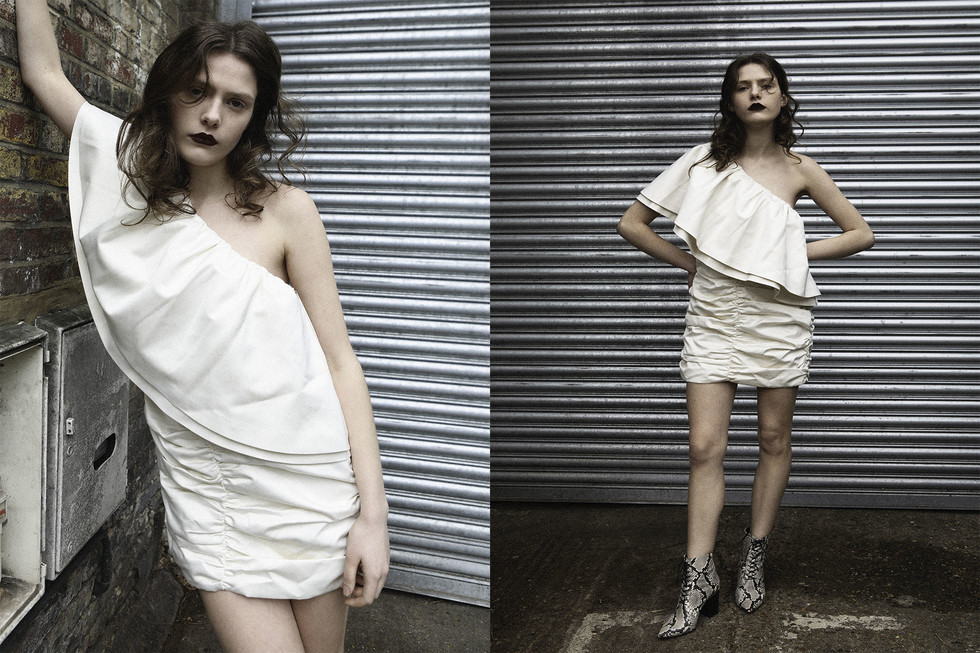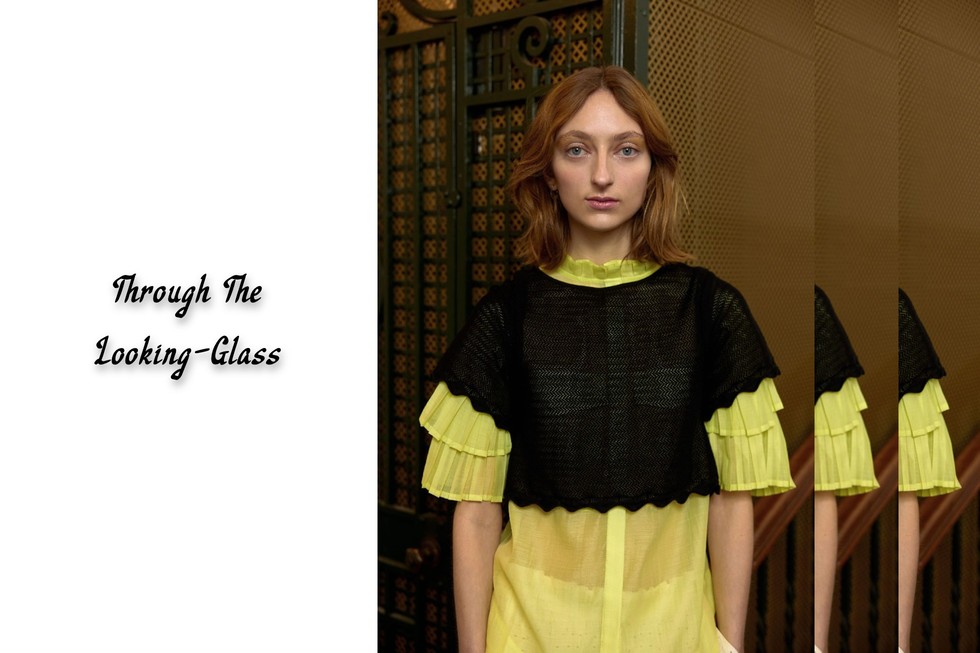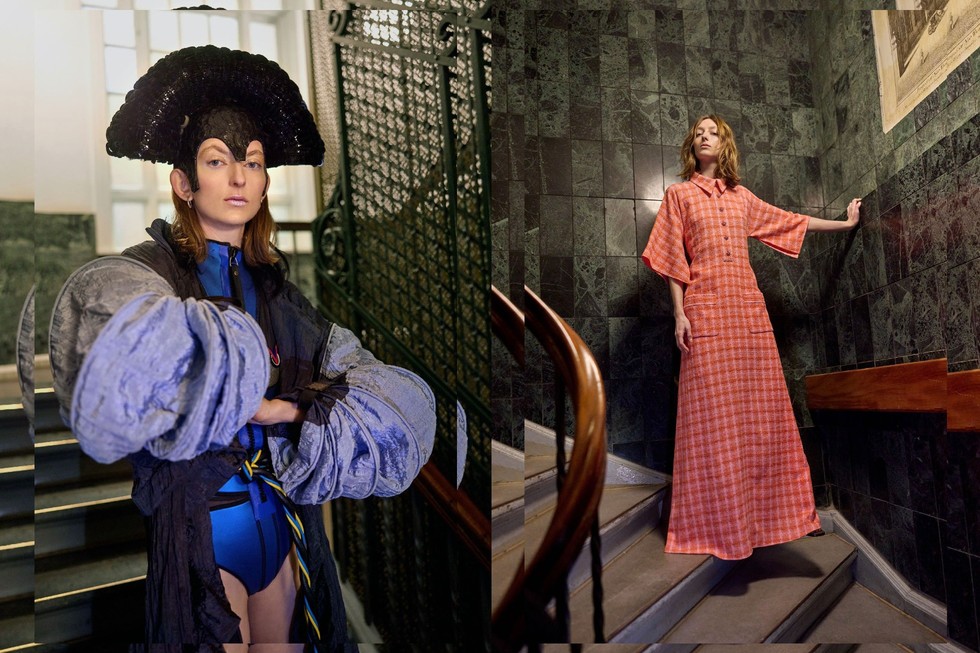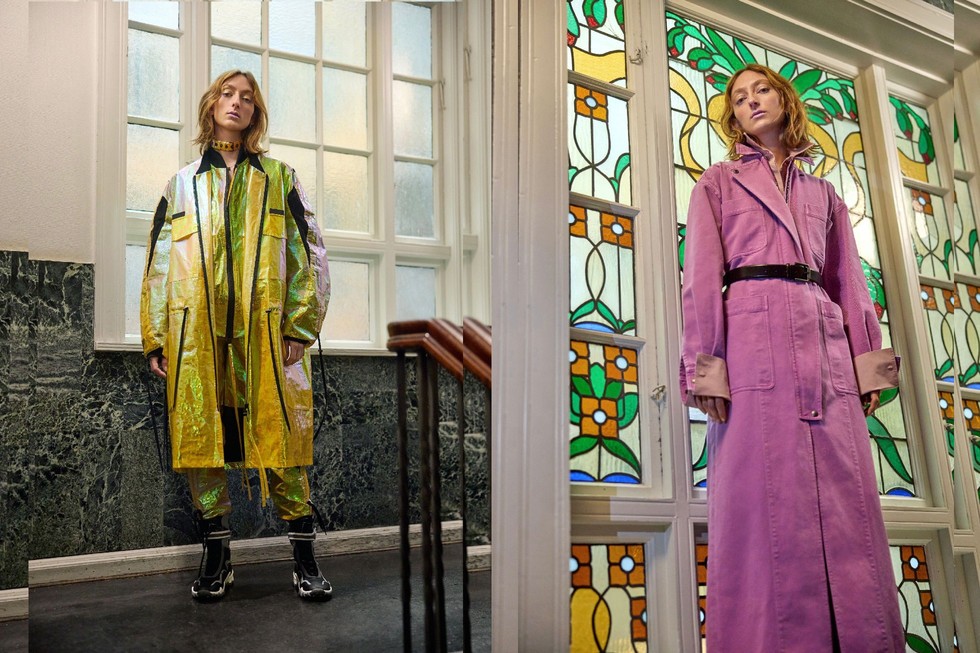Interview with Filippa Fuxe and Joel Andersson, winners of the NK Young Talent Award By Beckmans
Written by Ulrika LindqvistOn a sunny February morning, the Stockholm fashion crowd gathered at the historical department store Nordiska Kompaniet for breakfast and for celebration of the NK Young Talent Award by Beckmans winners Filippa Fuxe and Joel Andersson. Odalisque had the opportunity to interview them.
Ulrika Lindqvist: Congratulations on winning the NK Young Talent award, what are your initial feelings?
Filippa Fuxe: I feel very honored to receive this award, and I am grateful for the recognition.
Joel Andersson: Thank you, I am super proud and thankful for the award. The exhibition and everything surrounding it has been great.
UL: Please tell me a bit of your backstory, what did you study or work with before getting accepted to Beckmans?
FF: Before Beckmans I studied at Central Saint Martins in London, and during my childhood up I sewed my own clothes together with my grandmother. We used to go to an H&M store and purchase my favorite garment, sew one of my own, and return it. Clothing quickly became a very important way for me to express myself.
JA: So before Beckmans I dabbled in a couple of different things. I did a one-year course in sewing and pattern making followed by one year as a tailoring apprentice and one additional year of fashion theory.
UL: What initially drew you to the fashion industry?
FF: I have always been obsessed in the craftsmanship of making garments and of the female body. Growing up in a family of four sisters we always shared clothes, and I remember being fascinated over how a garment looked so different on all of our bodies in different stages of puberty and childhood.
JA: Honestly, I think my interest in fashion started through my discovery of street wear which was followed with a deeper dive into the world of high fashion and designers such as Margiela, Raf Simons and Jil Sander.
UL: What is your inspiration behind your designs and this collection in particular?
FF: My latest collection is based on an embodiment of a recycled and biodegradable material’s path through time and between bodies. I have used the raw product Circulose®, a material that has been dissolved from old clothes into cellulosic fibers that have been compressed, spun to thread, and woven into new fabrics. My philosophy is therefore that the material has its own life. It descends, is reborn and its soul reincarnates from one garment to another.The material’s reincarnation is visualised through inspiration from spiritual artists from the 1930´s such as Agnes Pelton and Emma Kunz.
JA: With this collection I wanted to weave together my past and present. When I first started to pursue fashion, I kept it separate from the rest of my life. I think it was due to the fact that I didn’t feel like it was a realistic career path. I had a feeling of ambivalence (hence the name of the collection) toward fashion. Growing up in a rural part of Sweden as a child of carpenters a lot of the clothing that I was subjected to were workwear. This stands in strong contrast to the tailoring, deconstruction and Avant Garde fashion that caught my eye later on in life. By creating something that I took into account, everything that has shaped me in my role as a designer I wanted to erase this weird pre and post fashion barrier that I had in my head.
UL: Can you share some insights into your creative process?
FF: I always work best when I let my creativity emerge organically and is based on enthusiasm, experimentation, and intuition.
JA: Initially my process is made up of a lot of research. I try to cast a wide net and soak up as much inspiration as possible in the early stages so that I can edit and narrow things down as I go. I also like to mix two- and three-dimensional sketching through both drawing and draping.
UL: What are your core values as a designer?
FF: Design processes are many times so speeded up.One of my core values are really that your art - in whichever media it might be - needs time and commitment. I believe in the importance of giving yourself over to your craft, and nurturing it with the time and energy it deserves.
JA: So for me it’s very important that any project is conceptually driven. I don’t want my clothing to just be clothing. I want every design decision to be made with the concept and initial inspiration in mind. Through the course of fashion school sustainability has also grown to be a core value of mine.
UL: What was the biggest challenge creating this collection?
FF: The collection is created through biodegradable material both in a three-dimensional way, from the outside through the usage of recycled fabrics from Circulose® and from the inside through the usage of cellulosic fibrers that created padding inside the garments. That was probably the biggest challenge, being limited by the material used in the collection.But limitations and boundaries often open up for creativity, I see it as a reliable tool for bringing new ideas to what I am working on.
JA: For me the biggest challenge was sourcing the materials. Since I decided to make everything out of upcycled textiles but still had very specific materials in mind it took a lot of time to gather everything.
UL: What can we expect from you in the near future?
FF: Over the past six months, I have worked intensively as the Creative Director for a new brand, Leoní, which is launching this spring together with fashion entrepreneur Nathalie Schuterman. Leoní's first collection reflects a balance between the sculptural and the minimalistic, garments that have undergone an extensive design process but are uncomplicated to wear. Moving forward, you will see something that I have never really worked with before, namely clothes that are practical for everyday use. For a long time, I have been in a period where I solely focused on creating clothes based on specific concepts, and sometimes they have been wearable and sometimes not. Now, I have found a balance between conceptual and intuitive creation, and I am interested in people wearing my clothes. There is something exciting about creating garments that will become a part of someone else's life.
JA: Hopefully, a lot more. I want to steadily keep evolving and try new things within fashion. I feel like ever since the initial post fashion school burnout period ended, I want to hit the ground running.





